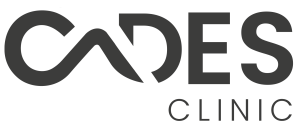An ongoing toothache can make it impossible to concentrate and focus on daily tasks, with pain that ranges from dull and constant to sharp and stabbing.
Once symptoms arise, it is crucial that they visit a dentist as quickly as possible for diagnosis and treatment. An x-ray and examination can identify what caused the issue while home treatment options can relieve some symptoms in the meantime.
Salt Water Rinse
Salt water rinse is an easy home solution that can ease toothache. Not only will it clean and disinfect your mouth, it may also help loosen food debris that has lodged between teeth as well as reduce any inflammation that causes pain in your gums.
Note that a salt water rinse can only temporarily relieve pain, it cannot heal cracked or broken teeth. If you suspect one has become cracked or broken it is best to visit your dentist right away to have it repaired; taking acetaminophen while waiting may help ease pain and decrease swelling.
Apply a cold compress to the area that hurts; this will reduce inflammation and help stop pooled blood, alleviating additional discomfort. Over-the-counter numbing gels or ointments with benzocaine should only be applied under supervision by medical professionals and should never be used directly on children.
If you have cracked teeth, clove oil can help alleviate pain and discomfort by acting as a natural antiseptic and soothing nerves that cause discomfort. Clove essential oil can usually be found at health food stores.
Swishing hydrogen peroxide solution may also provide temporary relief from toothache pain and provide temporary comfort until you can see your dentist. You can mix this solution by adding 1 teaspoon of salt per glass of water. Rinse your mouth out with it before spitting out. Do this several times each day until your toothache pain subsides.
Rinsing with equal parts water and baking soda may also help soothe toothaches. Since this solution contains strong alkaline compounds that may burn your throat, it is best to rinse your mouth out with warm water afterwards.
Over-the-Counter Medication
No one enjoys experiencing toothache pain. From sharp, throbbing pain like having the drummer from a marching band in your right incisor, or constant soreness and sensitivity that ensues, no one likes having one. While dentists offer tools such as local anesthesia and nitrous oxide in-office as well as pharmacy-based sedation medication solutions (sedation pills), patients may find relief through OTC (over-the-counter) medications.
OTC NSAID pain relievers like ibuprofen (Advil, Motrin IB and generic), naproxen (Aleve and generic) are particularly effective against dental discomfort as they work by suppressing pain signals that reach the central nervous system and by reducing swelling and inflammation associated with dental conditions. A common over-the-counter option that works via different mechanisms to reduce perceived pain is Tylenol; another effective painkiller.
Orajel and other topical preparations containing benzocaine have also proven successful at relieving tooth pain. Clinical studies have demonstrated its efficacy at numbing the area around painful teeth by blocking nerve impulses that cause discomfort. Applying cold compresses directly over where pain exists may also provide relief from toothache.
As with any over-the-counter medication, it is crucial that you follow all directions on its label carefully when taking over-the-counter pain relievers. Large doses or taking them over a long period may increase risk for heart attack and stroke as well as upset stomach. Furthermore, certain OTC medicines should never be combined with prescription or herbal remedies such as supplements – so always check with a pharmacist or physician regarding safe doses of OTC pain relievers as well as other prescription and herbal remedies you are currently taking; be sure to inform Gainesville Dental Associates of all medications taken or taken while pregnant/ breastfeeding as this could potentially complicate treatment plans or complications of treatment that arise due to interactions.
Garlic
Garlic is an effective natural antibiotic treatment that can aid in treating toothaches. It works twofold by both alleviating discomfort and clearing away infection.
Allicin, a compound found in garlic, contains antibacterial and antimicrobial properties which can kill off bacteria causing toothache symptoms. Furthermore, garlic contains natural anesthetic properties which help relieve discomfort quickly and efficiently.
Home remedies with raw garlic cloves can provide quick relief of toothache symptoms at home, including mashing it into a cotton ball and applying it directly onto the painful area, or chewing one raw clove of garlic for faster relief until you can visit a dentist in Jenkintown. This natural treatment could offer quick-fixes until they see one soon!
Garlic has long been used for medicinal purposes. A popular addition to international cuisines and heralded as an effective natural treatment for pain and infections, garlic is an evergreen perennial plant belonging to the Amaryllis family with bulbs boasting pungent aroma and taste; although its root may be consumed directly, its leaf is used medicinally as it is a powerful antioxidant and may help prevent heart disease.
Garlic can be an easy and natural way to treat toothaches without negative side effects from over-the-counter medicines. When treating an infection with garlic cloves rather than powdered forms available at stores, as fresher cloves will contain more allicin and are therefore safer.
Garlic may help reduce toothache symptoms, but there are other natural solutions available such as ice packs that constrict blood vessels or salt water rinses that disinfect an affected area. Peppermint may help numb pain while helping reduce swelling; another possibility would be applying either warm or cold compresses directly over the problem area.
When applying either a hot or cold compress, it’s essential that the compress is not placed directly against your gums as this could result in chemical burns that are extremely painful and require medical treatment. Rinsing out your mouth after applying one is also highly recommended to ensure all leftover debris has been cleared away and ensure that any discomfort from using compresses has subsided.
Pressure Points
Acupressure, an ancient alternative medicine practiced since Ancient China, involves applying pressure to certain meridian points on the body in order to alleviate pain and fight infection without resorting to pharmaceutical medication or surgery. Pressure points can be activated using fingers, hands or elbows by applying consistent pressure.
Acupressure can be used to treat various ailments, including toothache. As well as relieving discomfort from this source, acupressure also relieves anxiety and stress levels while increasing circulation. Achieve this treatment at home by finding specific pressure points and applying steady, firm pressure for several minutes at each one.
SI 18 or Small Intestine Meridian Point 18 can help provide instantaneous relief from toothache symptoms. This acupressure point can be found near the cheek bone hole directly across from the lower edge of your nose; to stimulate it press down with index finger and middle finger for one minute while breathing deeply – this method also works great for jaw swelling, TMJ issues and Bell’s palsy.
Another acupressure point that may help relieve your toothache is the ST 6 or Stomach 6 pressure point, located by finding the muscle that clenches your teeth together naturally. Press this point with both thumb and index finger for relief from nausea, fatigue or stress.
If a toothache is keeping you awake at night, massage the Hegu pressure points on your shoulders to try stimulating them. These spots can be found between your thumb and index finger on both arms – by stimulating these points it could help reduce toothache, jaw pain, headaches, neck & shoulder pain as well as anxiety & constipation symptoms.
GV 14 (Governing Vessel 14 pressure point), also known as an effective toothache remedy, can be located near your shoulders on the outside arm between two thumb widths below the base of the skull and one-finger width above your seventh cervical vertebrae spine. Stimulating this acupressure point helps clear heat, expel wind, regulate qi and strengthen yang while simultaneously strengthening liver functions.
Disclaimer: The content on this blog is intended for general informational purposes only. It is not a substitute for professional medical advice, diagnosis, or treatment. Always consult qualified healthcare providers for personalized advice. Information regarding plastic surgery, dental treatment, hair transplant, and other medical procedures is educational and not a guarantee of results. We do not assume liability for actions taken based on blog content. Medical knowledge evolves; verify information and consult professionals. External links do not imply endorsement. By using this blog, you agree to these terms.





